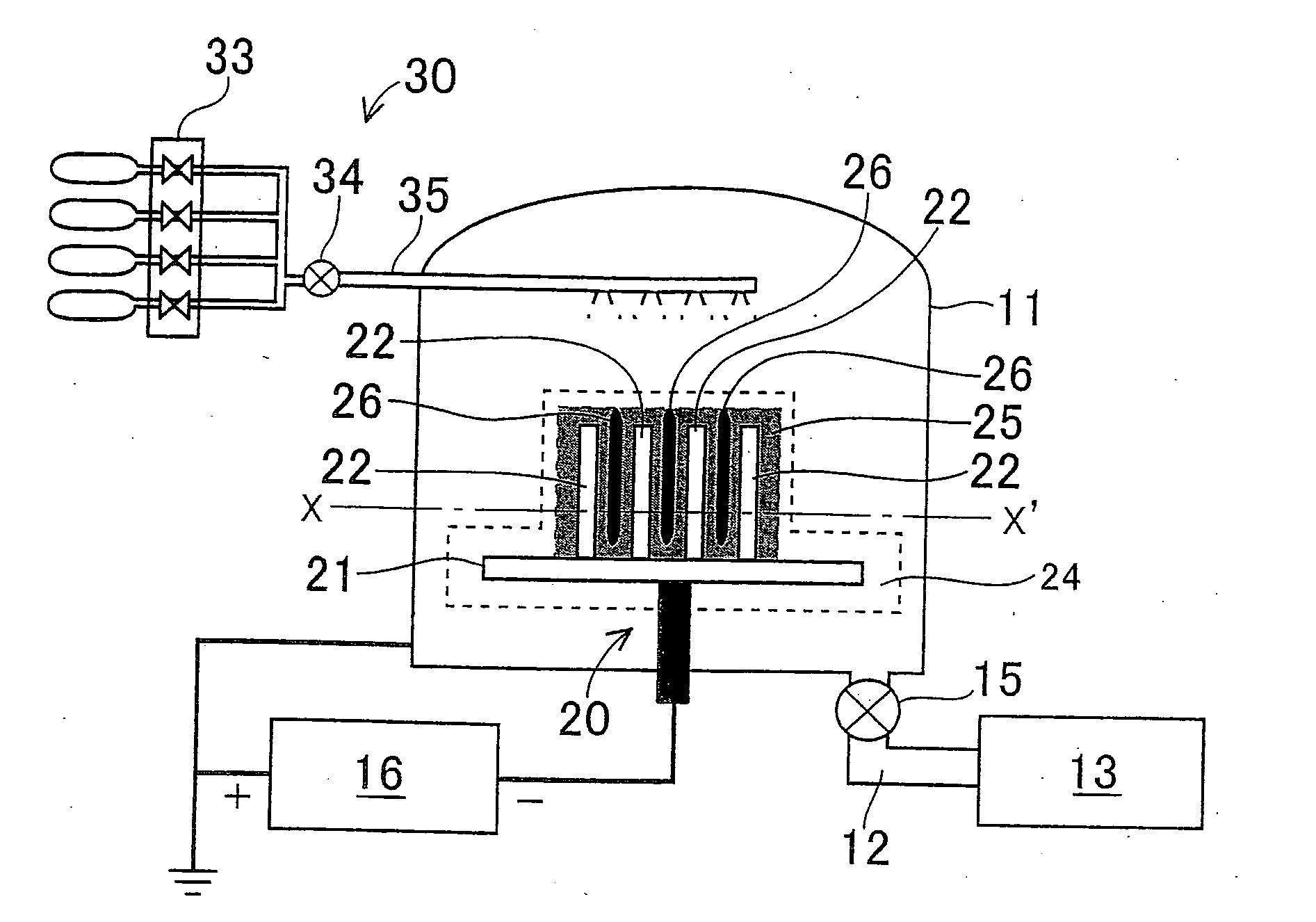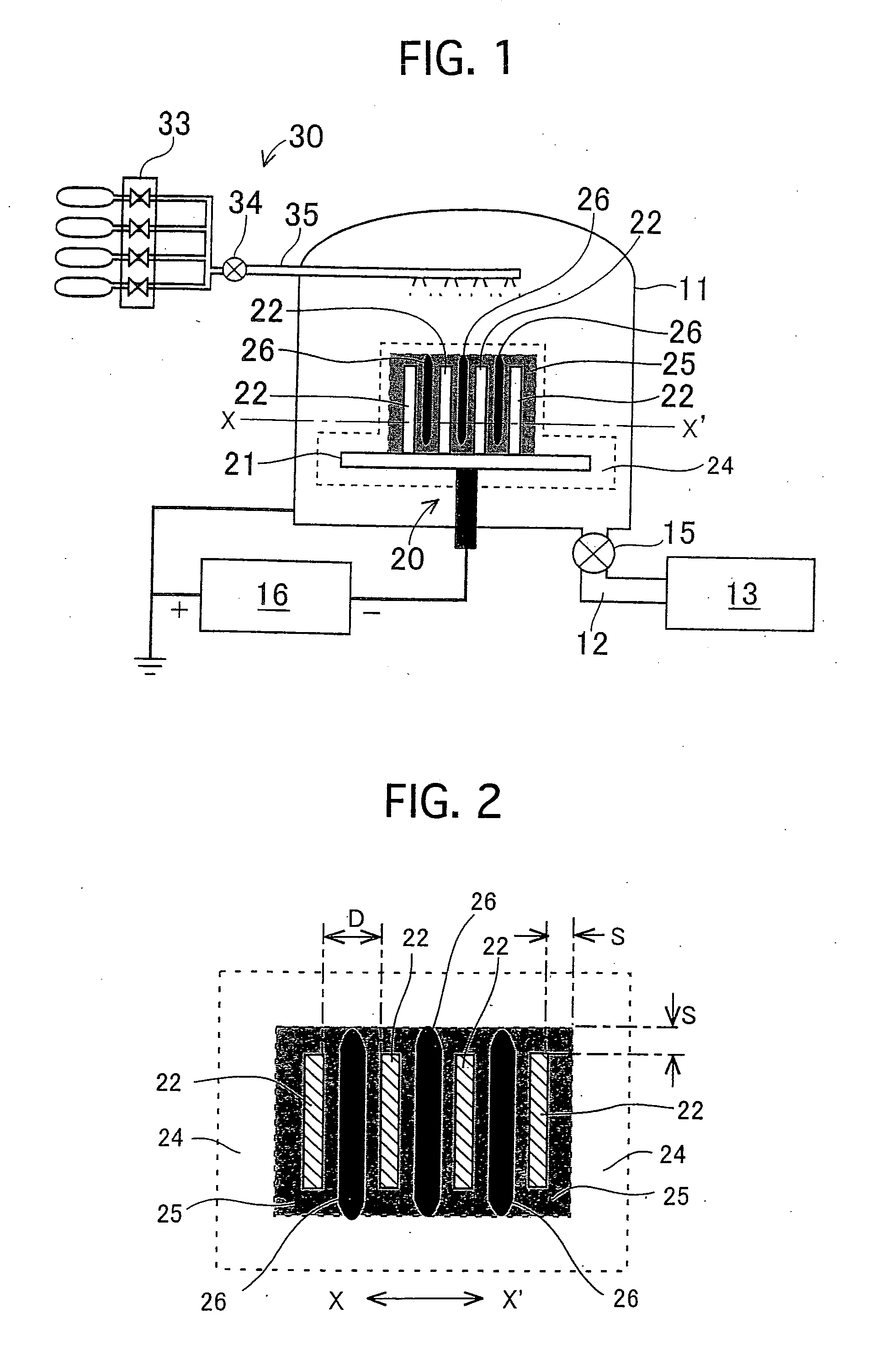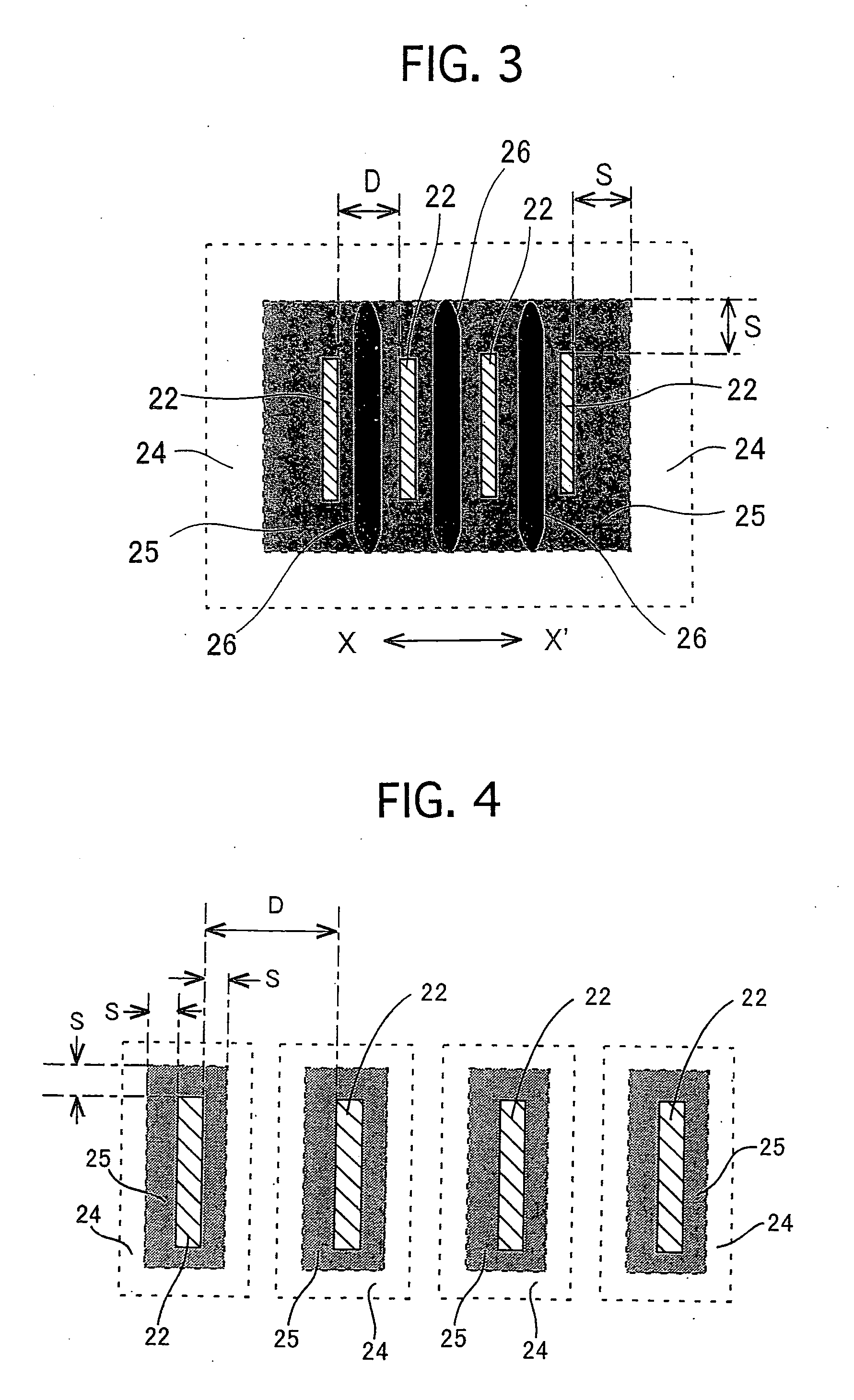Amorphous carbon, amorphous-carbon coated member, and process for forming amorphous carbon film
- Summary
- Abstract
- Description
- Claims
- Application Information
AI Technical Summary
Benefits of technology
Problems solved by technology
Method used
Image
Examples
experimental examples
[0084] Examples of the present amorphous carbon, amorphous-carbon coated member and process for producing an amorphous carbon film will be hereinafter described with reference to the drawings. To begin with, an apparatus for forming an amorphous carbon film will be described.
Film-Forming Apparatus
[0085]FIG. 1 and FIG. 5 are conceptual explanatory diagrams on an apparatus for forming an amorphous carbon film, respectively.
[0086] An apparatus for forming an amorphous carbon film comprises a cylinder-shaped stainless-steel chamber 11 used as a film-forming furnace, and an exhaust system 13 communicated with the chamber 11 through an exhaust passage 12. The exhaust system 13 comprises a hydraulic rotary pump, a mechanical booster pump, and a hydraulic diffusion pump. The processing pressure in the chamber 11 is controlled by opening / closing an exhaust control valve 15 disposed in the exhaust passage 12.
[0087] In the chamber 11, there are disposed a negative electrode 20 connected wi...
example no.1
Example No. 1
[0091] An amorphous carbon film according to Example No. 1 will be described using FIG. 1 and FIG. 2. Note that FIG. 2 is a diagram for schematically showing how a glow discharge appeared during forming films in the present example, and is a cross-sectional view taken along the alternate long and one dash line “X”-“X′” of FIG. 1.
[0092] The film-forming apparatus with the above-described construction was operated to form an amorphous carbon film on a surface of the flat plate-shaped substrates 22. In the present example, four pieces of 22 mm×39 mm×3 mm flat plate-shaped substrates made of pure aluminum were used as the flat plate-shaped substrates 22. As illustrated in FIG. 1 and FIG. 2, these flat plate-shaped substrates 22 were disposed one after another so as to be put in a parallel manner in the thickness-wise direction and in a laminated manner. On the top surface of the support bench 21, there were formed grooves (not shown) with a depth of 1 mm so as to dispose t...
example no.2
Example No. 2
[0097] Except that the flat plate-shaped substrates 22 were made of stainless steel (or SUS304), an amorphous carbon film was formed on a surface of the flat plate-shaped substrates 22 in the same manner as Example No. 1. Note that 6-hour film-forming (or a film-forming temperature of 300° C.) produced a 16 μm-film thickness amorphous carbon film on a surface of the flat plate-shaped substrates 22.
[0098] In addition, amorphous-carbon coated members provided with the amorphous carbon film produced in Example No. 2 were labeled No. 2.
[0099] Here, FIG. 2 illustrates how the glow discharge appeared during film forming in Example Nos. 1 and 2. In Example Nos. 1 and 2, a sheath 25 and a negative glow 24 were formed around the negative electrode 20. On the flat plate-shaped substrates 22, there was formed the sheath 25 provided with a predetermined sheath width (or “S”=5 mm) along the flat-shaped substrates 22. Between the oppositely facing surfaces of the flat plate-shaped ...
PUM
| Property | Measurement | Unit |
|---|---|---|
| Thickness | aaaaa | aaaaa |
| Pressure | aaaaa | aaaaa |
| Length | aaaaa | aaaaa |
Abstract
Description
Claims
Application Information
 Login to View More
Login to View More - R&D
- Intellectual Property
- Life Sciences
- Materials
- Tech Scout
- Unparalleled Data Quality
- Higher Quality Content
- 60% Fewer Hallucinations
Browse by: Latest US Patents, China's latest patents, Technical Efficacy Thesaurus, Application Domain, Technology Topic, Popular Technical Reports.
© 2025 PatSnap. All rights reserved.Legal|Privacy policy|Modern Slavery Act Transparency Statement|Sitemap|About US| Contact US: help@patsnap.com



